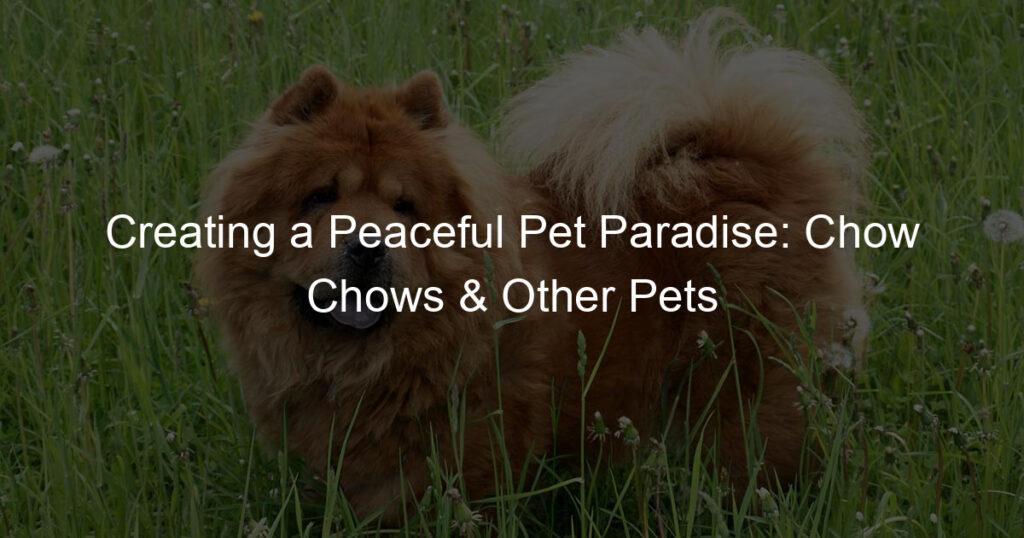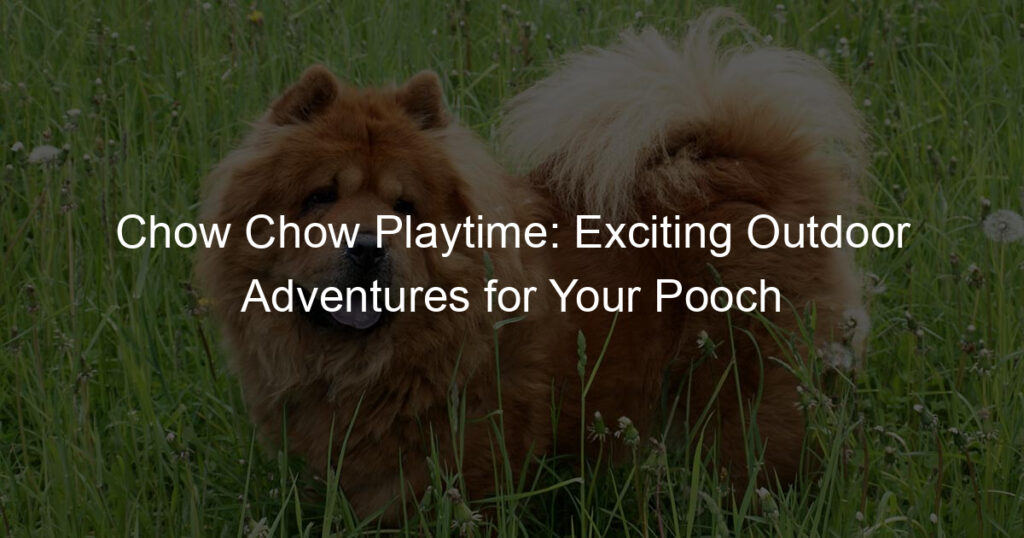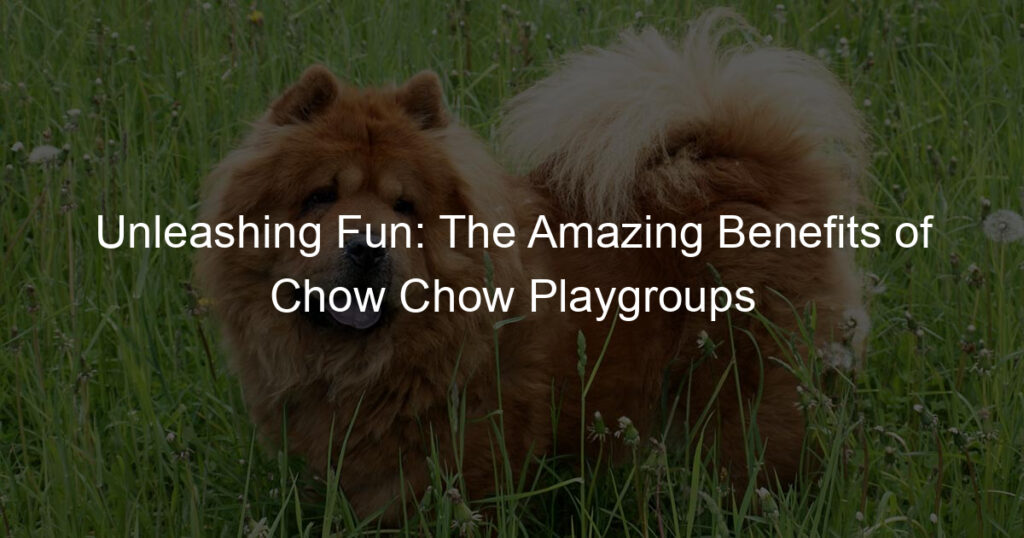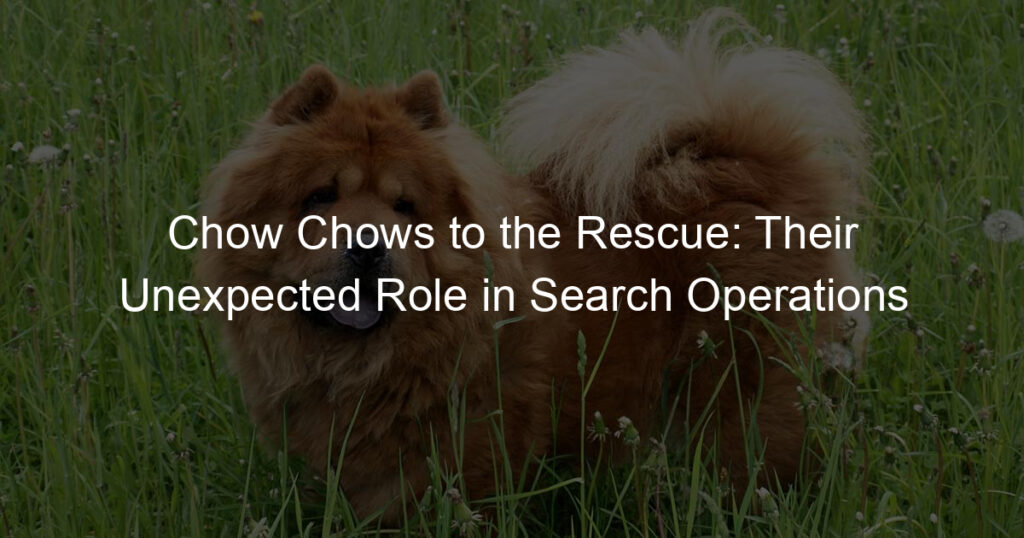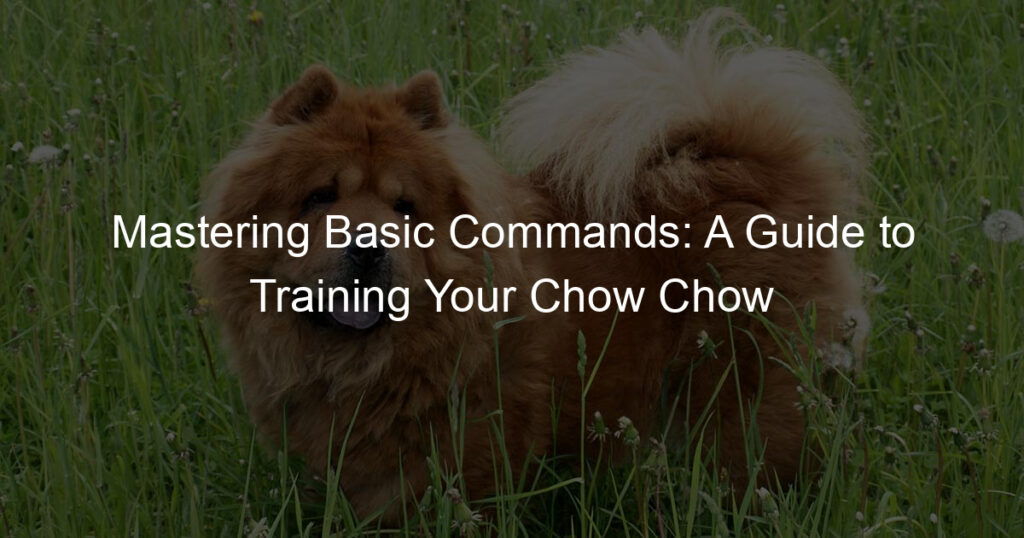Introduction to the Chow Chow Breed
Chow Chows are a unique breed of dog, known for their lion-like appearance and distinctive blue-black tongues. They are a breed full of character and charm, and they have a rich history that dates back thousands of years. In this section, we will delve into the origins and history of the Chow Chow breed, as well as their typical behavior and temperament.
- Origins and history of the Chow Chow breed
- Typical Chow Chow behavior and temperament
The Chow Chow breed has a long and storied history. Originating in China over 2000 years ago, these dogs were bred for a variety of purposes, including hunting, guarding, and even pulling sleds. The breed’s name, “Chow Chow,” is thought to come from the Chinese word for “lion,” reflecting their regal and powerful nature. Learn more about the history of the Chow Chow breed on Wikipedia.
Chow Chows are known for their aloof and independent nature. They are not typically overly affectionate or needy, preferring to keep to themselves most of the time. However, they are also fiercely loyal to their families and can be quite protective. Despite their somewhat standoffish demeanor, Chow Chows are intelligent and can be trained with patience and consistency. It’s important to remember that every Chow Chow is an individual, and their behavior and temperament can vary widely.
In the following sections, we will explore how to train your Chow Chow, foster harmonious pet relationships, and create a peaceful pet paradise. Stay tuned to learn more about this fascinating breed and how to make the most of your time with your Chow Chow.
Training Your Chow Chow
Training your Chow Chow can be a rewarding experience. This breed is known for its intelligence and loyalty, but it can also be stubborn at times. Here are some basic training techniques that can help you and your Chow Chow have a successful training journey.
Basic Training Techniques
Here are some fundamental techniques to get you started:
- Establishing a Training Routine
- Using Positive Reinforcement
- Addressing Common Training Challenges
Consistency is key when training your Chow Chow. Establish a regular training schedule and stick to it. This could be a specific time each day, or certain activities that signal training time. For example, you might train your Chow Chow after meals or before walks. This routine helps your Chow Chow understand when it’s time to focus and learn.
Chow Chows respond well to positive reinforcement. This means rewarding your dog for good behavior, rather than punishing them for bad behavior. Rewards can include treats, praise, or playtime. Remember, the reward should immediately follow the desired behavior to reinforce the connection.
Chow Chows can be stubborn and independent, which can present some training challenges. If your Chow Chow is not responding to training, try changing up your techniques or consult with a professional dog trainer. Patience and persistence are key. Remember, every dog learns at their own pace.
Training your Chow Chow can be a fun and rewarding experience. With patience, consistency, and positive reinforcement, you can help your Chow Chow become a well-behaved and happy member of your family.
Socializing Your Chow Chow
One of the most crucial aspects of raising a healthy and happy Chow Chow is socialization. This process involves introducing your Chow Chow to a variety of people, environments, and other animals to help them become well-adjusted and confident.
- Importance of Early Socialization
- Methods for Socializing Chow Chows
- Overcoming Socialization Difficulties
Early socialization is essential for Chow Chows. This breed is known for its aloof and independent nature, which can sometimes be mistaken for aggression. By exposing your Chow Chow to different experiences and environments at a young age, you can help them become more comfortable and less reactive in various situations. According to a study conducted by the American Kennel Club, dogs that are well socialized are less likely to develop behavioral problems later in life.
There are several effective methods for socializing your Chow Chow. One of the most effective ways is through puppy classes. These classes provide a safe and controlled environment for your Chow Chow to interact with other dogs and people. Additionally, regular walks in the park and visits to pet-friendly stores can also provide excellent socialization opportunities. Remember, the goal is to expose your Chow Chow to a variety of experiences in a positive and controlled manner.
Despite your best efforts, your Chow Chow might still struggle with socialization. This is not uncommon and there are several strategies you can use to overcome these difficulties. One effective method is to use positive reinforcement. Reward your Chow Chow for positive interactions with treats or praise. If your Chow Chow is particularly fearful or aggressive, it may be beneficial to work with a professional dog trainer or behaviorist.
In conclusion, socialization is a vital part of raising a well-adjusted Chow Chow. By starting early, using effective methods, and addressing any difficulties promptly, you can help your Chow Chow become a confident and friendly companion.
Fostering Harmonious Pet Relationships
Creating a peaceful environment for your pets is crucial for their happiness and well-being. This is especially true when you have a Chow Chow in your family. Let’s explore how to foster harmonious relationships between your Chow Chow and other pets.
Chow Chow and Other Pets
Chow Chows are known for their aloof and independent nature. However, with proper understanding and careful introduction, they can get along well with other pets.
-
Understanding Chow Chow Pet Compatibility
Chow Chows are not naturally aggressive, but they can be territorial. They usually get along with pets they grew up with, but they might be wary of new ones. It’s essential to understand your Chow Chow’s personality and adjust accordingly. Learn more about Chow Chow temperament here.
-
Introducing a Chow Chow to Other Pets
Introducing a Chow Chow to other pets should be done gradually and under controlled conditions. Start with short, supervised interactions and gradually increase the time they spend together. Always reward positive behavior to encourage good interactions.
-
Managing Multiple Pets in a Household
Managing multiple pets in a household requires patience and consistency. Ensure each pet has its own space and resources, like food and toys, to prevent competition. Regular exercise and training can also help maintain a peaceful environment.
Remember, every pet is unique and may require different approaches. Always monitor their interactions and consult with a professional if you notice any signs of aggression or stress.
Case Study: Successful Pet Cohabitation
In this section, we will delve into a real-life example of a Chow Chow successfully cohabiting with other pets. This case study will provide valuable insights into the challenges faced, strategies used, and key takeaways.
- Challenges Faced
- Strategies Used
- Key Takeaways
The main challenge faced in this case was the inherent aloofness of the Chow Chow breed. The Chow Chow, named Bella, was initially reluctant to interact with the other pets in the household, a Labrador Retriever and a domestic cat. Bella often displayed signs of aggression and dominance, which led to frequent conflicts.
The pet owner used several strategies to foster a peaceful cohabitation. Bella was gradually introduced to the other pets in a controlled environment. The owner also employed positive reinforcement techniques, rewarding Bella for non-aggressive behavior. Regular exercise and playtime were scheduled for all pets to expend energy and reduce tension.
The key takeaway from this case study is that successful pet cohabitation with a Chow Chow is possible with patience and the right strategies. It is crucial to understand the breed’s characteristics and employ appropriate training techniques. Regular interaction and positive reinforcement can greatly improve the Chow Chow’s relationship with other pets.
For more information on the Chow Chow breed, visit the Wikipedia page.
Creating a Peaceful Pet Paradise
Every Chow Chow owner dreams of creating a peaceful pet paradise for their furry friends. It’s not just about providing a comfortable home, but also ensuring that the environment is pet-friendly and conducive to their overall well-being. Let’s delve into how you can design a perfect environment for your Chow Chow.
Designing a Pet-Friendly Environment
Designing a pet-friendly environment involves careful planning and consideration. It’s about creating a space that is safe, comfortable, and stimulating for your Chow Chow. Here are some indoor and outdoor considerations for pet cohabitation:
- Indoor considerations for pet cohabitation
- Outdoor considerations for pet cohabitation
Indoors, ensure that your Chow Chow has a dedicated space for rest and relaxation. This could be a cozy corner with a comfortable bed and toys. Remove any toxic plants and ensure that all wires and small objects that can be chewed or swallowed are out of reach. Also, make sure that the temperature is comfortable for your Chow Chow, as they are prone to overheating.
Outdoors, provide a secure and fenced area for your Chow Chow to explore and play. Be mindful of potential hazards such as toxic plants, sharp objects, and small gaps in the fence where your pet could escape. Also, ensure that there is a shaded area for your Chow Chow to rest, especially during hot weather. Remember, regular exercise is essential for this breed’s health and happiness.
Creating a peaceful pet paradise for your Chow Chow requires thought and effort. But seeing your pet thrive in a safe and comfortable environment makes it all worthwhile. Stay tuned for more tips on ensuring the health and happiness of your pets.
Ensuring the Health and Happiness of Your Pets
As a Chow Chow owner, your primary responsibility is to ensure the health and happiness of your pet. This involves a combination of regular exercise, proper nutrition, and regular vet check-ups and vaccinations.
- Regular Exercise and Playtime
- Proper Nutrition for Chow Chows and Other Pets
- Regular Vet Check-ups and Vaccinations
Chow Chows, like any other breed, require regular exercise to maintain their health. Exercise helps to keep your Chow Chow’s weight in check, reduces behavioral problems, and promotes overall well-being. Playtime, on the other hand, is not just about physical activity. It’s also an opportunity for your pet to engage its mind. Interactive games such as fetch or hide and seek can stimulate your Chow Chow’s intellect and prevent boredom. Remember, a tired dog is a happy dog!
Proper nutrition is crucial for your Chow Chow’s health. Chow Chows require a balanced diet that includes a good mix of proteins, carbohydrates, and fats. Avoid feeding your pet human food as it may contain ingredients that are harmful to dogs. Instead, opt for high-quality commercial dog food that is formulated specifically for the nutritional needs of Chow Chows. Always consult with your vet before making any changes to your pet’s diet.
Regular vet check-ups are essential for early detection of potential health issues. Your vet can conduct a thorough examination and recommend any necessary treatments or interventions. Vaccinations, on the other hand, protect your Chow Chow from various diseases such as rabies, distemper, and parvovirus. Make sure your pet is up-to-date with its vaccinations to ensure its long-term health and happiness.
In conclusion, the health and happiness of your Chow Chow depend on regular exercise, proper nutrition, and regular vet check-ups and vaccinations. By adhering to these guidelines, you can ensure that your pet lives a long, healthy, and happy life.
Conclusion: Enjoying Your Pet Paradise
As we reach the end of our journey, it’s time to reflect on the key points we’ve discussed and look forward to creating a peaceful pet paradise for your Chow Chow.
- Recap of Key Points
- Final Thoughts on Creating a Peaceful Pet Paradise
We started by introducing the unique and lovable Chow Chow breed, highlighting their distinct characteristics and temperament. We then moved on to discuss effective training strategies, emphasizing the importance of patience, consistency, and positive reinforcement.
Next, we explored how to foster harmonious relationships between your Chow Chow and other pets, stressing the need for gradual introductions and mutual respect. Finally, we delved into creating a peaceful pet paradise, offering tips on providing a comfortable environment, engaging toys, and nutritious food for your furry friend.
Creating a peaceful pet paradise for your Chow Chow is more than just providing a comfortable space. It’s about understanding their unique needs and personality, and creating an environment that allows them to thrive. Remember, a happy and healthy Chow Chow is one that feels loved, understood, and well-cared for.
As a Chow Chow owner, your role is to provide the best possible care for your pet, ensuring they lead a fulfilling and joyful life. With the right approach, you can create a pet paradise that your Chow Chow will love and enjoy.
As we conclude, always remember that the journey with your Chow Chow is a rewarding one filled with love and companionship. Here’s to many happy years in your pet paradise!

